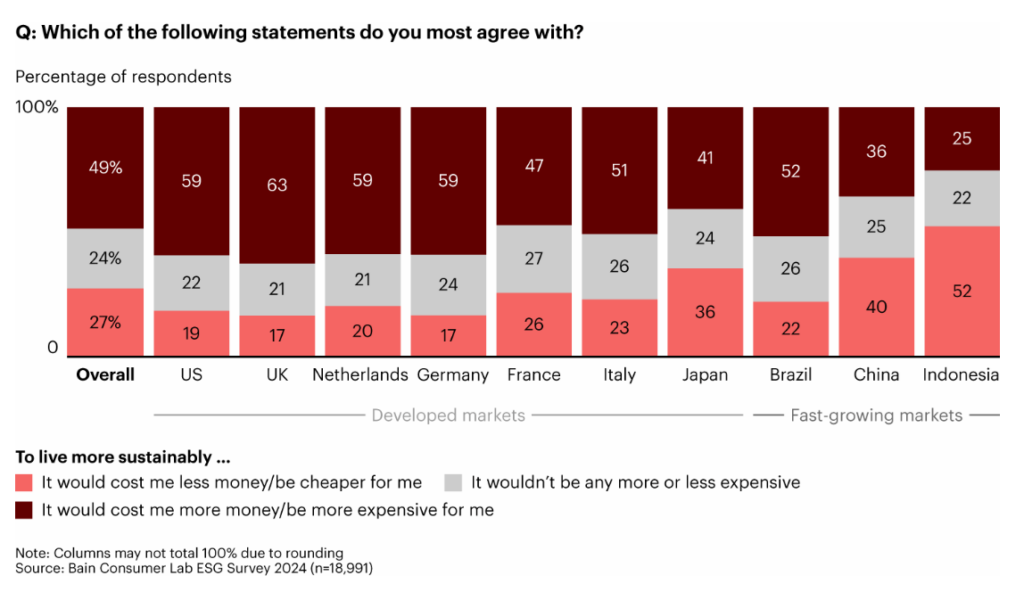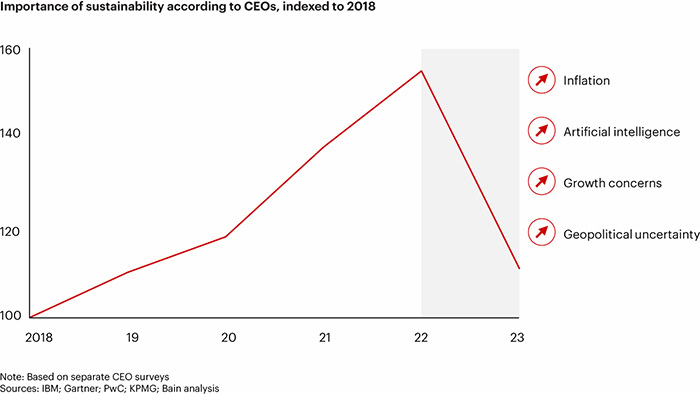Sustainability is evolving, and so are the strategies of Retailers and Consumer Products companies. Over the past year, I’ve spoken to many Chief Sustainability Officers, and they are all trying to balance their ambition to drive rapid progress on sustainability goals against the reality of harsh economic pressures and delivery challenges. Unfortunately, ‘win-win’ solutions are infrequent; CEO focus is elsewhere, and many companies are now confronting tough trade-offs as they navigate the sustainability transition.
As the landscape shifts, success is no longer about setting lofty, voluntary commitments to inspire action. Companies must take a more focused, practical, and value-driven approach. The bold goals of past years are being rethought, and many organizations have already adjusted their plans to navigate this complex, high-pressure environment.
What’s Changing?
The challenges of delivering sustainability goals have turned out to be steep. Companies that aimed high for 2030 are often now grappling with lagging progress, particularly in areas like scope 3 decarbonization, plastics recycling & recycled content. Some have even had their Net Zero SBTi commitments revoked, while others are delaying timelines or scaling back objectives.
Why is this happening despite the best intentions? Companies are stuck in a web of competing pressure:
- Consumer expectations: People care deeply about the environment but still expect businesses to bear the costs of going green. They worry that a sustainable lifestyle is more expensive.

- Economic hurdles: Sustainability efforts, especially in areas requiring new technologies and cross-value chain shifts, are often both expensive and need major upfront capex. This is frequently compounded by a lack of sufficient infrastructure (e.g., plastics collection & recycling systems).
- Investor shifts: After years of growth, ESG-focused funds saw reduced enthusiasm in 2024. Many investors are prioritizing short-term gains over sustainability.
- Regulatory risks: New frameworks like CSRD demand detailed disclosures, raising reputational and legal risks for companies that fall short of public promises.
Yet, despite these headwinds, the need for action has never been more urgent. With six planetary boundaries already breached and progress on key Sustainable Development Goals stagnating, the stakes couldn’t be higher. Society expects continued progress, and businesses must adapt. Our long-term future depends on it.
A Smarter Approach to Sustainability
Leading companies are rethinking what success looks like and how to balance financial performance with sustainability progress. Here are some keys to progress:
1. Pick Your Battles
Leaders are focusing on a few “spikes” where they can stand out – selecting initiatives with real impact, competitive advantage, and clear economic returns. Meanwhile, other material issues are managed as “shields,” ensuring regulatory compliance and minimizing risk without over-extending resources.
2. Leverage Technology Curves
New sustainable solutions often require big upfront investments, but their costs tend to drop as they scale. Companies are analysing which sustainable technologies can reach cost parity (e.g., mechanical recycling) and looking to scale adoption rapidly. Conversely for necessary technologies that are struggling to achieve payback, they’re advocating for supportive policies, without which it’s uneconomic to progress.
3. Collaborate on Policy
Voluntary actions alone won’t cut it for systemic changes, especially in the upstream sectors on which CPGs and Retailers depend like agriculture, chemicals, and logistics. Industry leaders are engaging with policymakers to shape regulations and building cross-industry partnerships that support sustainable innovation and investment.
4. Set Realistic Goals
Instead of aspirational targets, companies are defining goals grounded in business realities and aligned with their strengths, technology feasibility, and potential policy support. The result? Commitments that are not only achievable but also make financial sense and which provide a more transparent signal to investors and regulators on the real pace of change.
5. Drive Company-wide Transformation
For real impact, sustainability goals must be led by P&L owners across the organization, underpinned by strong leadership and tight integration into the financial plan. Progress at scale depends on clear accountability for achieving sustainability and financial goals together (and actively managing the trade-offs as they arise).
Looking Ahead
It’s easy to feel discouraged when progress seems slow, and challenges mount. Voluntary goals are proving tricky to deliver because we deal with economy-wide challenges. But leaders are rising to the occasion with a renewed, pragmatic mindset, recognising the necessity of working collaboratively with other businesses & regulators to overcome systemic barriers.
Sustainability is not just about doing what’s right—it’s also about doing what works.

